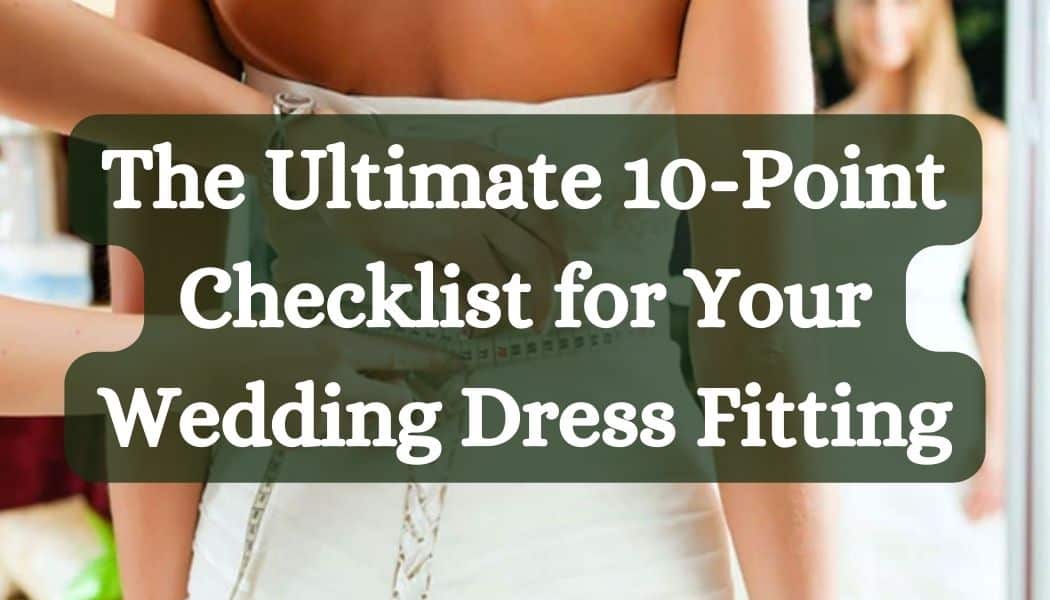
There’s no denying it: finding the perfect wedding dress is a thrilling yet daunting task. Your wedding dress fitting is where dreams meet reality. It’s where you finally see yourself as a bride. But how do you navigate through this unforgettable journey? Look no further, as “The Ultimate Checklist for Your Wedding Dress Fitting” is here to make sure every detail, from the boutique selection to the last stitch, is handled with care.
Table of Contents
Understanding Your Style
Body Shape Analysis
Your body is unique, and understanding its shape is crucial in highlighting your best features. Work with experienced professionals who can provide insights into styles that flatter your figure. Whether curvy, petite, or somewhere in between, there’s a perfect dress for you.
Personal Preferences
What makes you feel beautiful? Is it lace, silk, or a simple design? Your dress should reflect your personality, and it might take a few tries to find the perfect fit. Be patient and stay true to yourself.
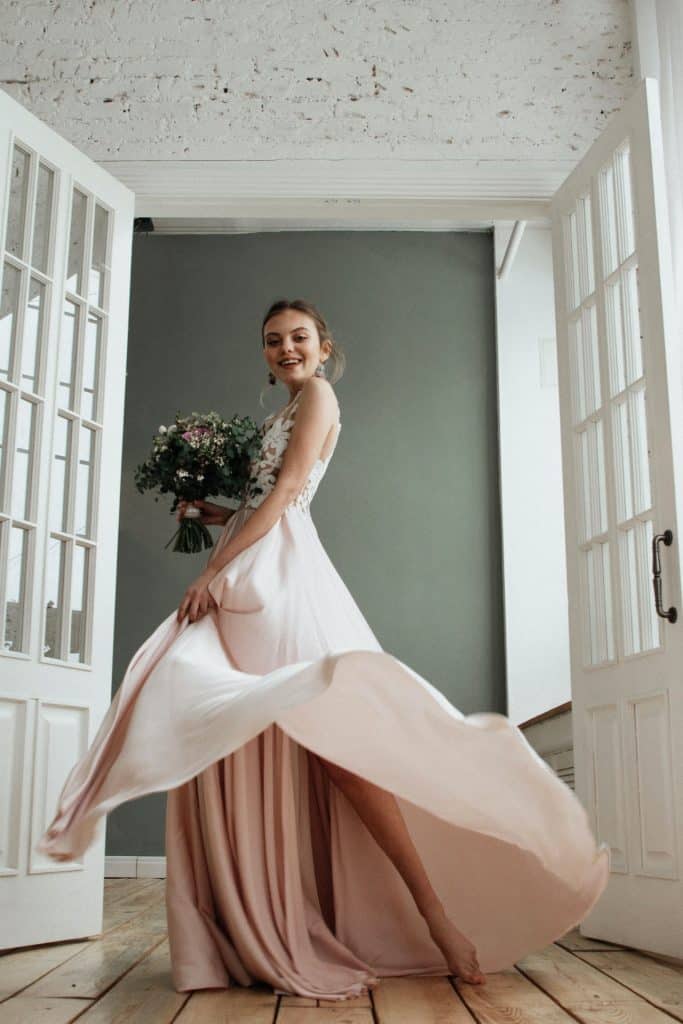
Theme Considerations
The setting of your wedding plays a role in the dress you choose. A flowy beach dress won’t necessarily fit a grand castle setting. Please think of the overall picture and how your dress will complement it.
Choosing the Right Boutique
Location
Proximity matters. Selecting a boutique close to home will make your numerous visits less stressful. A local shop is also more accessible for those last-minute alterations. Best for Bride is an amazing option for those who live near the Toronto Area.
Reputation
Look for boutiques known for their quality and service. Reviews from real brides can be a goldmine of information. Word of mouth from friends or family can also lead you to the right place.
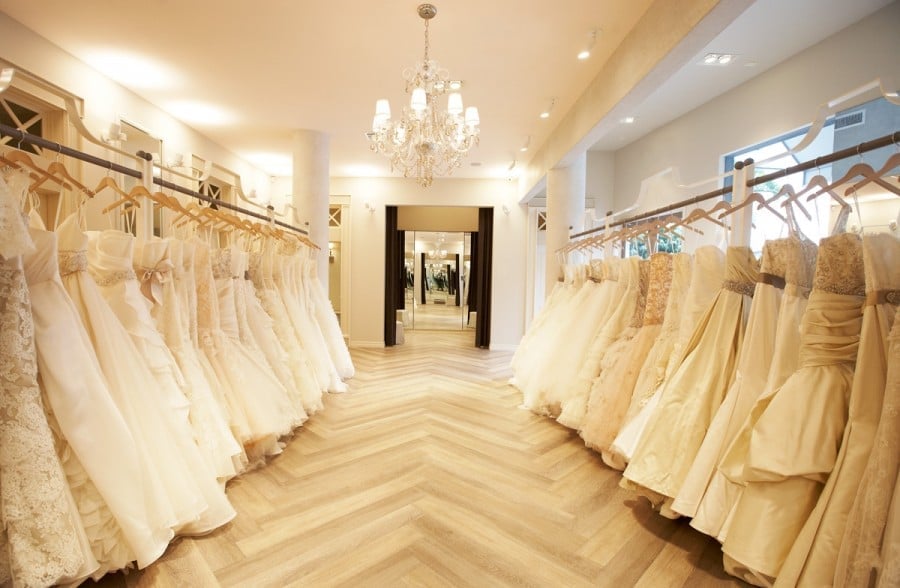
Price Range
Budgeting is crucial. Be clear with the boutique about your price range to avoid falling in love with a dress you can’t afford. Remember, alterations and accessories can add to the cost.
Designer Options
Explore different designers, and don’t be afraid to venture out of your comfort zone. You might find that a lesser-known designer captures your style perfectly.
Booking Your Appointment
Scheduling Tips
Time flies when planning a wedding. Schedule your appointments well in advance, allowing space for contemplation and alterations.
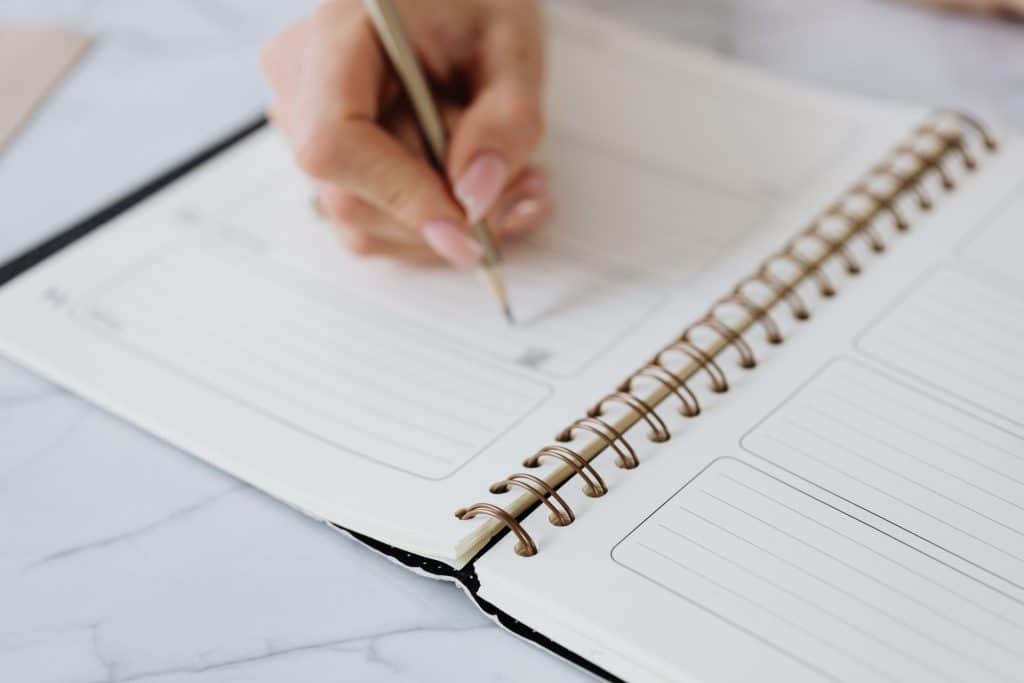
What to Bring
Bring along the shoes, accessories, and undergarments you plan to wear. These small details can make a massive difference in the fitting.
Who to Bring
Choose someone who understands your style and will give honest feedback. It could be your mother, a close friend, or a partner.
First Fitting Experience
What to Expect
Expect to be overwhelmed, excited, and maybe a bit confused. Trying on wedding dresses is an emotional experience. Keep an open mind and enjoy the process.
How to Communicate
Your feelings matter, so don’t hold back. If something doesn’t feel right, speak up. Your bridal consultant is there to help you find your dream dress.
Choosing Accessories
Accessories can make or break a look. Try various options, and don’t be afraid to mix and match. Sometimes, less is more.
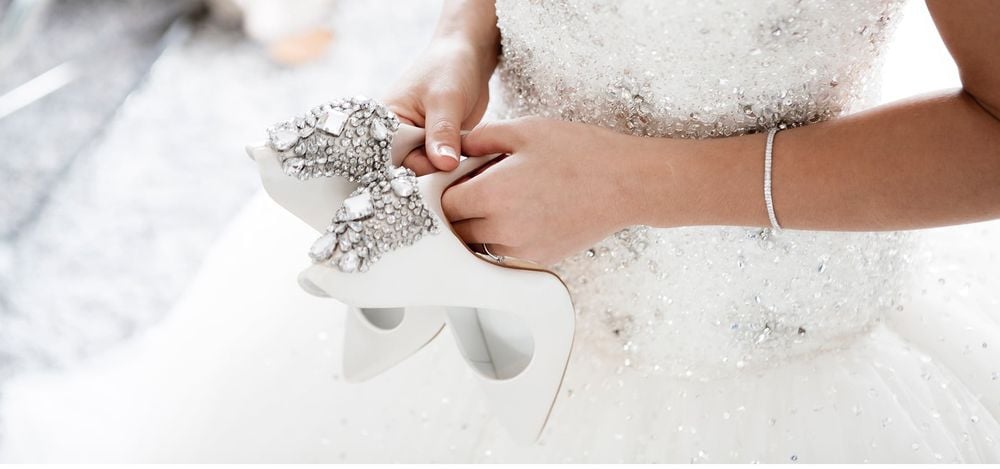
The Importance of Alterations
Types of Alterations
From adjusting the length to reshaping the bodice, alterations make the dress uniquely yours. Understand what changes are possible and trust the professionals to guide you.
Timing
Timing is everything. Start too early, and your body might change. Start too late, and you’ll be stressed. Your boutique will help you time it just right.
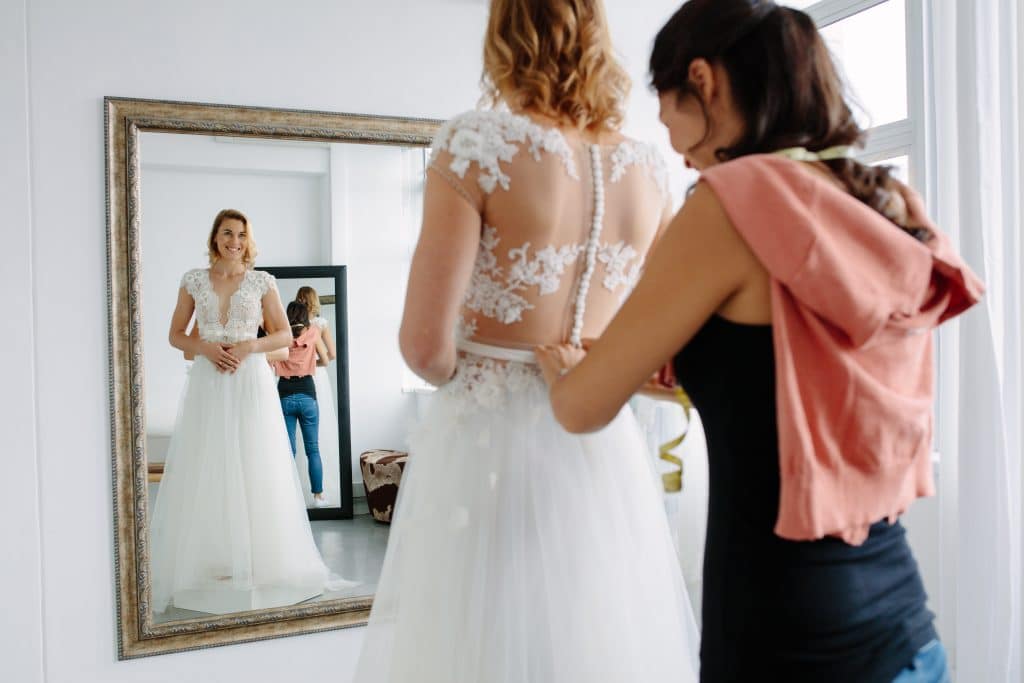
Costs
Discuss alteration costs upfront to avoid surprises. Alterations can be an investment but are often essential for the perfect fit.
Second Fitting and Adjustments
Assessing Changes
See how the alterations look and feel. Is it comfortable? Does it feel like “the one”? Your second fitting is a chance to fine-tune the details.
Making Further Requests
Don’t be shy about asking for more adjustments. Speaking up now is better than feeling uncomfortable on your wedding day.
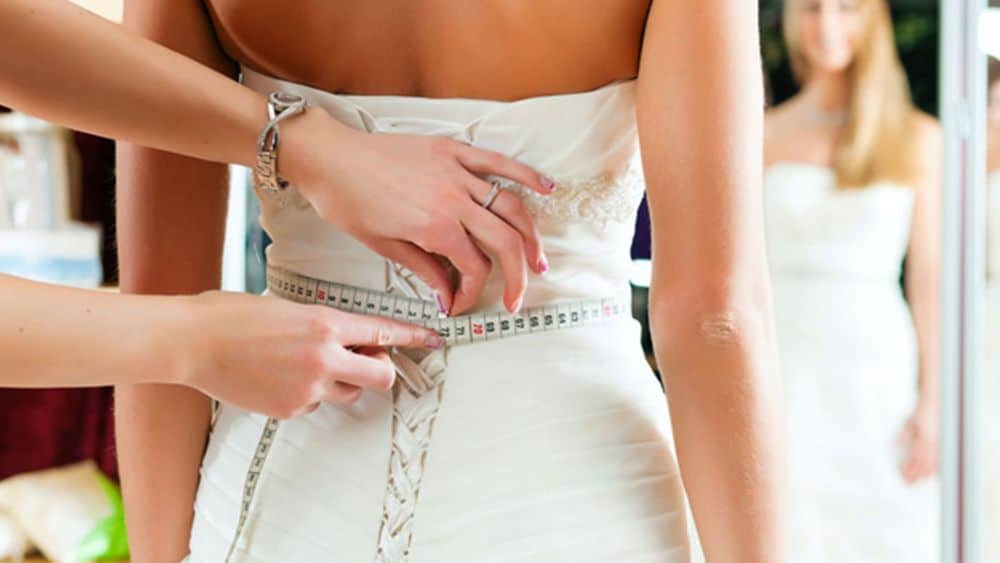
Final Fitting
Confirming Fit
Your final fitting is the moment of truth. Move around, dance, sit — do everything you’ll do on your big day to ensure it’s perfect.
Final Adjustments
Last-minute changes? No problem. Make sure everything is perfect before taking your dress home.
Taking the Dress Home
Learn how to transport and store your dress correctly. The boutique should guide you on keeping your dress pristine until the wedding day.
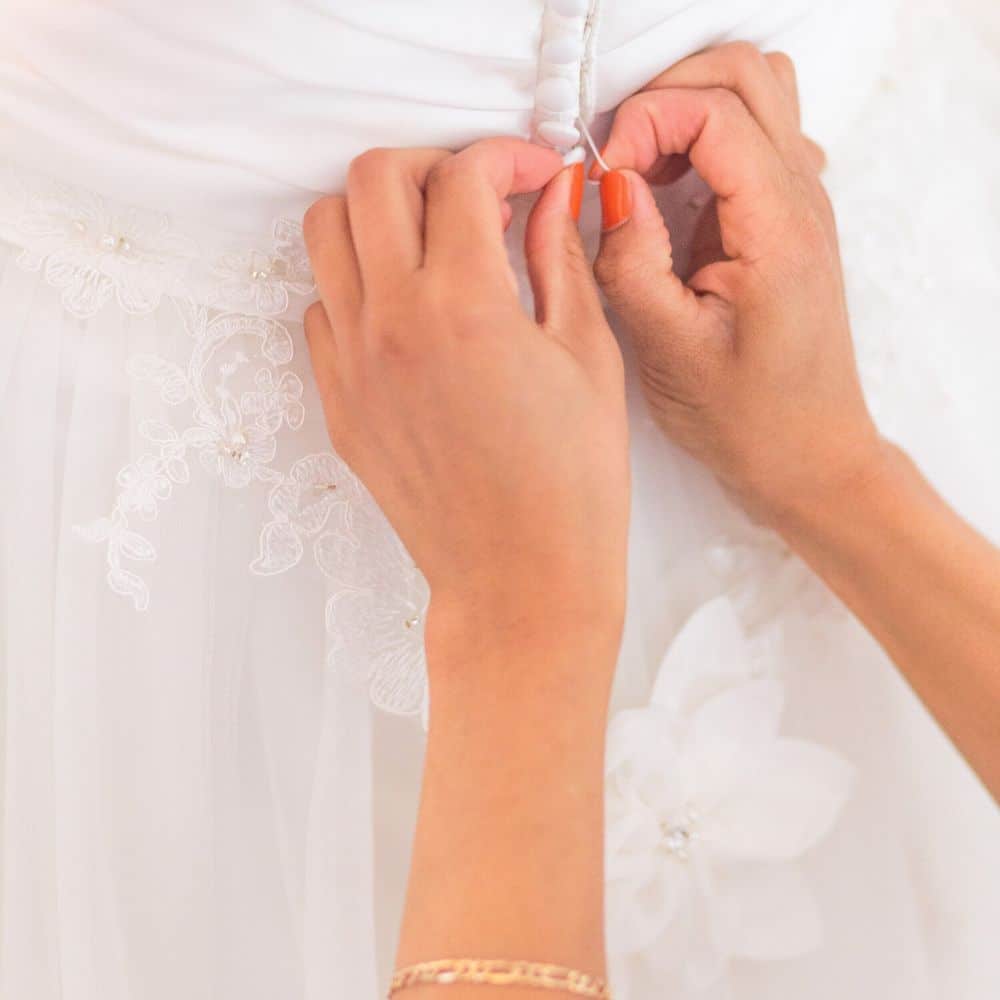
After the Wedding
Preservation
Your dress is a cherished memory. Learn preservation techniques to keep it beautiful for future generations or another special occasion.
Cleaning
A wedding can be tough on a dress. Find a professional cleaner specializing in wedding dresses to restore their beauty.
Storage
Storing your dress correctly is critical to maintaining its appearance. Follow professional guidelines or consider a bridal gown preservation service.
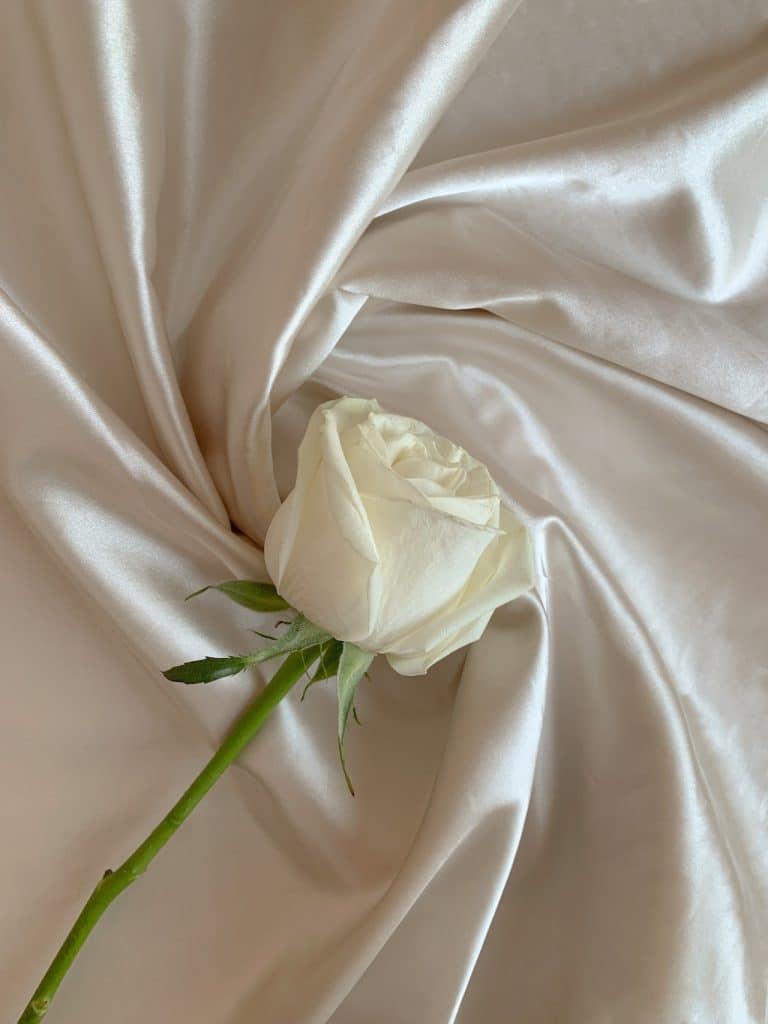
Working with Professionals
Choosing a Seamstress
The right sewist can work wonders on a dress. Look for one with wedding dress experience and a portfolio to show their expertise.
Communicating Needs
Clear communication with your seamstress and bridal consultant is vital. They’re part of your team and should understand your vision.
Other Considerations
Backup Plans
Having a Plan B provides peace of mind. Be prepared for spare accessories or an emergency contact at the boutique.
Emergency Kits
An emergency kit with essentials like safety pins and a sewing kit can save the day. Include items that are specific to your dress.
Summary: Your Essential Wedding Dress Fitting Guide
- Understanding Your Style
- Analyzing body shape
- Aligning with personal preferences
- Considering wedding theme and setting
- Choosing the Right Boutique
- Researching location, reputation, price range, and designer options
- Booking Your Appointment
- Scheduling wisely
- Preparing what to bring and who to accompany you
- First Fitting Experience
- Setting expectations
- Communicating feelings
- Selecting accessories
- The Importance of Alterations
- Understanding types, timing, and costs
- Second Fitting and Adjustments
- Assessing changes
- Requesting further adjustments if needed
- Final Fitting
- Confirming fit
- Making last-minute adjustments
- Learning dress care and transport
- After the Wedding
- Preserving, cleaning, and storing the dress
- Working with Professionals
- Selecting experienced seamstresses
- Effectively communicating needs
- Other Considerations
- Creating backup plans
- Preparing emergency kits
FAQ: Wedding Dress Fitting
What is the best time to start wedding dress shopping?
Start at least nine months before your wedding. This allows time for finding the dress, alterations, and any unexpected delays.
How many fittings will I need?
Typically, brides need three fittings. However, more or fewer may be required depending on the alterations needed.
Should I buy a dress online?
Buying online can be risky without professional guidance. If you choose this route, work with reputable sites and consider getting professional adjustments.
Can I lose weight after buying the wedding dress?
It’s possible, but communicate your plans with the boutique and seamstress. Significant weight loss can affect the structure and look of the dress.
How do I preserve my wedding dress after the big day?
Seek professional cleaning and preservation services. They’ll know the best methods to keep your dress as beautiful as the day you wore it.
What should I do if my dress doesn’t fit at the final fitting?
Don’t panic. Professional sewists can make last-minute adjustments. Trust them to make the necessary changes.
Conclusion
Finding your dream wedding dress is filled with excitement, joy, and a fair share of stress. With “The Ultimate Checklist for Your Wedding Dress Fitting,” you can navigate this beautiful journey confidently and efficiently. From the first glance in the mirror to preserving your dress as a cherished memory, every step is a significant part of your love story. Embrace it, enjoy it, and say “yes” to the dress that makes you feel like the radiant bride you are!












